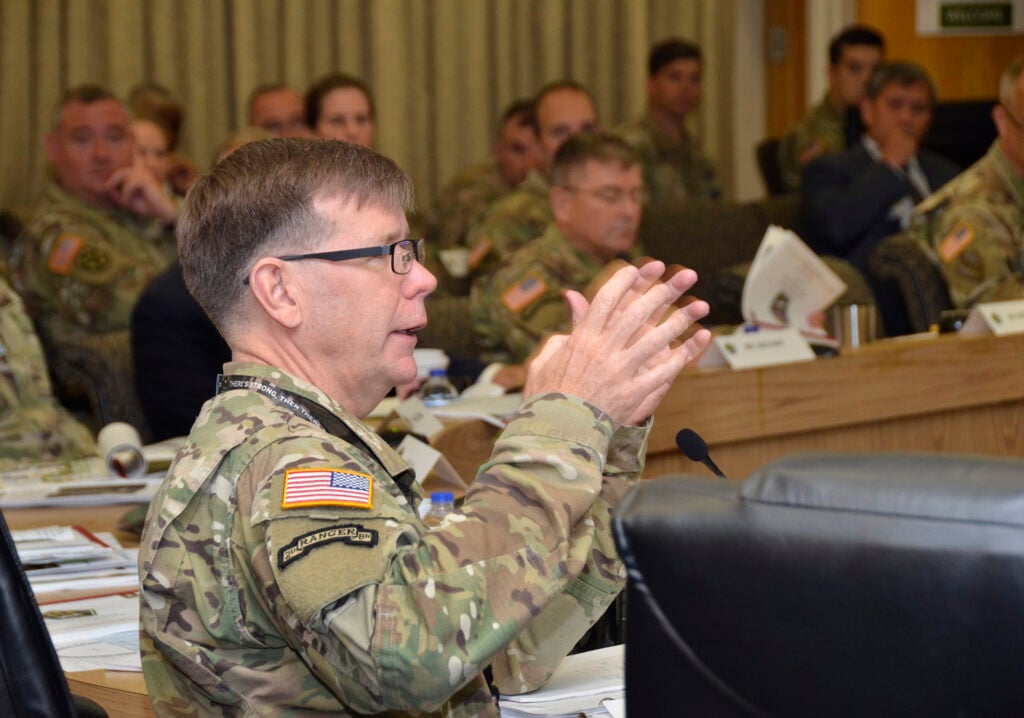By SYDNEY J. FREEDBERG JR

WASHINGTON: The concept the Pentagon now calls “information advantage” is an ancient one: “If you know your enemy and know yourself,” Sun Tzu wrote 2,500 years, “you need not fear the outcome of one hundred battles.” The hard part is applying that precept to fast-moving future conflicts, where malware, jamming, and even social media may be as decisive as any airstrike.
The Army — indeed, the whole joint force — is struggling to define how to actually do this, and the bureaucratic turf wars can be as complex as the technology.
“Stop fighting and start figuring out how to integrate the capability[:] That’s my one request to the force, to all the practitioners, to all the thinkers that are out there,” Lt. Gen. Stephen Fogarty told the AOC CEMAlite conference this morning. “You can be critical. Provide that to us in a constructive way and help us continue to build the tradecraft.”
The objective, the chief of Army Cyber Command said, is for future commanders to be able to see what’s happening “in real time — not just the physical effects [e.g. weapons fire], and the physical space within the spectrum [i.e. radio and radar signals], but then also that information space, where ideas are being bounced around like crazy.”
The problem is that you have to pull together a common understanding across multiple specialized disciplines: cyber warfare, electronic warfare, information operations, psychological operations, signals intelligence, network operations, spectrum management, space operations – even public affairs & media relations. That raises the specter of tremendous problems of miscommunication, as well as competition for turf.
There are intriguing technologies in play, like a prototype artificial intelligence called Entropy that the Army AI Task Force is developing to algorithmically monitor text and media in multiple languages — including Chinese — and inform PYSOPs troops of trends in real-time. But the institutional challenges are at least as daunting as the technical ones.
Just defining a formal requirement for what “information advantage” actually means is such a daunting task that none of the services volunteered to take it on. Instead, as my colleague Theresa has reported, the challenge is being handled by the Joint Requirements Oversight Council, which is struggling with it, as its chairman, Vice Chief of Joint Staff Gen. John Hyten, admitted: “We’re actually, right now, not sure what we’re gonna do with information advantage.”
Within its own ranks, the Army’s created a multi-disciplinary battalion for Intelligence, Information, Cyber, Electronic Warfare, & Space (I2CEWS) and merged headquarters staff sections for space, command & control, and information. But the service has spent tremendous effort over the last seven years combining just two of these disparate fields: electronic warfare, which disrupts enemy communications by physically jamming their radio frequencies with a counter-signal; and cyber warfare, which disrupts enemy communications by digitally hacking their software.
“Back in the day, there was pretty significant friction,” Fogarty said. “There have certainly been compromises.” But, he said, we have to “stop fighting each other and start fighting the adversary.”
The Army rolled out a combined field manual for Cyber/Electromagnetic Activity (CEMA) back in 2013 – something the other services and the Joint Staff haven’t done yet, Fogarty noted – and in 2017 made the controversial decision to merge the EW and cyber career fields into a single cyber corps.
Then in 2018 the Army combined the main electronic warfare modernization effort with a signals intelligence program, what became the Terrestrial Layer System. The next year, Fogarty proposed expanding Army Cyber Command from cyber and electronic warfare to information operations, psychological operations, and more, evolving into an Information Warfare Command. Top Army leaders have publicly endorsed the change in principle, but details are still being thrashed out.
Likewise, Army Cyber Command, the Cyber Center at Fort Gordon, the Command Arms Center at Fort Leavenworth, and other Army organizations are all wrestling with the idea of information advantage – or whatever the formal term becomes. “We continue to refine this,” Fogarty said. “I’m not saying the final landing spot is ‘information advantage.’ That that’s where we’re at right now, and I think it’s a maturation of where we were even six months ago.”
No comments:
Post a Comment